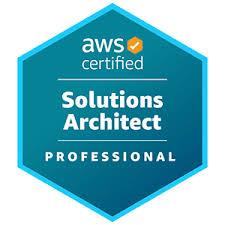The demand for AWS Certified SysOps Administrators is growing as businesses increasingly adopt cloud computing. AWS SysOps Administrators are responsible for managing, deploying, and maintaining AWS cloud infrastructure, ensuring security, performance, and cost efficiency.
If you are interested in becoming an AWS Certified SysOps Administrator, this step-by-step guide will help you understand the certification process, necessary skills, and best practices to achieve this career AWS SysOps.
Step 1: Understand the Role of an AWS SysOps Administrator
Before pursuing the certification, it’s important to understand what an AWS SysOps Administrator does. The key responsibilities include:
- Managing AWS infrastructure such as EC2, RDS, and S3.
- Monitoring system performance using AWS CloudWatch.
- Implementing security best practices with IAM and AWS Security Hub.
- Optimizing costs by managing AWS resources efficiently.
- Automating tasks using AWS CLI, Terraform, and AWS Lambda.
A strong background in system administration, networking, or cloud computing will be beneficial.
Step 2: Learn the Basics of AWS
If you are new to AWS, start by learning the fundamentals. Some recommended resources include:
- AWS Free Tier – Explore AWS services hands-on.
- AWS Cloud Practitioner Essentials – A beginner-friendly course covering AWS fundamentals.
- AWS Well-Architected Framework – Understand best practices for cloud operations.
Familiarize yourself with key AWS services:
- Compute: EC2, Lambda, Elastic Load Balancer
- Storage: S3, EBS, Glacier
- Networking: VPC, Route 53, Direct Connect
- Databases: RDS, DynamoDB, Aurora
Step 3: Gain Hands-On Experience with AWS Services
To pass the AWS SysOps Administrator certification, practical experience is crucial. You can:
- Set up and configure an EC2 instance with security groups and IAM roles.
- Deploy a load-balanced application using Auto Scaling Groups and ELB.
- Implement a backup strategy with AWS Backup and Amazon S3 Glacier.
- Configure monitoring and alerts using CloudWatch and AWS SNS.
Use AWS Hands-on Labs, Qwiklabs, or AWS Skill Builder to gain real-world experience.
Step 4: Enroll in an AWS SysOps Administrator Training Course
To streamline your learning, consider enrolling in structured training programs. Some of the best courses include:
- AWS Training and Certification – Official AWS courses.
- A Cloud Guru – AWS Certified SysOps Administrator.
- Udemy – AWS Certified SysOps Administrator Associate.
- Linux Academy – AWS SysOps Administrator Path.
These courses cover all exam objectives, real-world scenarios, and hands-on labs.
Step 5: Master Automation and Scripting
Automation is a critical skill for AWS SysOps Administrators. Learn:
- AWS CLI – Manage AWS services from the command line.
- AWS CloudFormation & Terraform – Infrastructure as Code (IaC).
- Python, Bash, or PowerShell – Automate administrative tasks.
Practicing automation will help you streamline AWS deployments and improve efficiency.
Step 6: Study for the AWS Certified SysOps Administrator Exam
The AWS Certified SysOps Administrator – Associate exam tests your knowledge in areas such as:
- Deployment, management, and operations on AWS.
- Security and compliance controls.
- Networking, storage, and data management.
- Monitoring and troubleshooting AWS environments.
Exam Details:
- Format: Multiple choice and multiple response questions
- Duration: 130 minutes
- Cost: $150 USD
- Recommended Experience: 1+ year of AWS experience
Study Resources:
- AWS Exam Guide and Whitepapers
- AWS Certified SysOps Administrator Official Practice Exams
- AWS Documentation and FAQs
- Community Forums (Reddit, AWS Discussion Boards)
Step 7: Take Practice Exams
Before attempting the actual exam, test your knowledge with practice exams. Some great platforms include:
- Whizlabs AWS SysOps Practice Tests
- Tutorials Dojo AWS Practice Exams
- AWS Official Practice Exams
Practice exams will help you identify weak areas, improve time management, and build confidence.
Step 8: Schedule and Pass the AWS SysOps Administrator Exam
Once you feel prepared, schedule the exam via the AWS Training and Certification Portal. The exam can be taken:
- Online (Proctored Exam) – Take it from home with strict monitoring.
- In-Person – At an AWS-authorized test center.
Exam-Day Tips:
- Read all questions carefully.
- Use the elimination method for tricky questions.
- Keep an eye on the timer and manage your time wisely.
- Review your answers before submitting.
Passing the exam earns you the AWS Certified SysOps Administrator – Associate certification, a recognized credential in the cloud computing industry.
Step 9: Gain Practical Work Experience
After certification, apply your skills in real-world projects or job roles. Consider:
- Freelancing AWS projects to gain experience.
- Applying for AWS SysOps Administrator jobs.
- Contributing to AWS open-source projects.
- Joining AWS communities and networking with professionals.
Step 10: Advance Your AWS Career
Becoming an AWS SysOps Administrator opens doors to career growth opportunities such as:
- AWS Solutions Architect – Designing cloud solutions.
- AWS DevOps Engineer – Automating infrastructure and CI/CD pipelines.
- Cloud Security Engineer – Specializing in AWS security best practices.
Continuous learning through AWS Advanced Certifications, such as AWS Certified DevOps Engineer – Professional, can further boost your career.
Conclusion
Becoming an AWS Certified SysOps Administrator requires dedication, hands-on practice, and a strategic study plan. By following this step-by-step guide, you can build the necessary skills, pass the certification exam, and unlock exciting career opportunities in AWS cloud operations.
Start your AWS journey today and position yourself as a highly skilled cloud professional!

